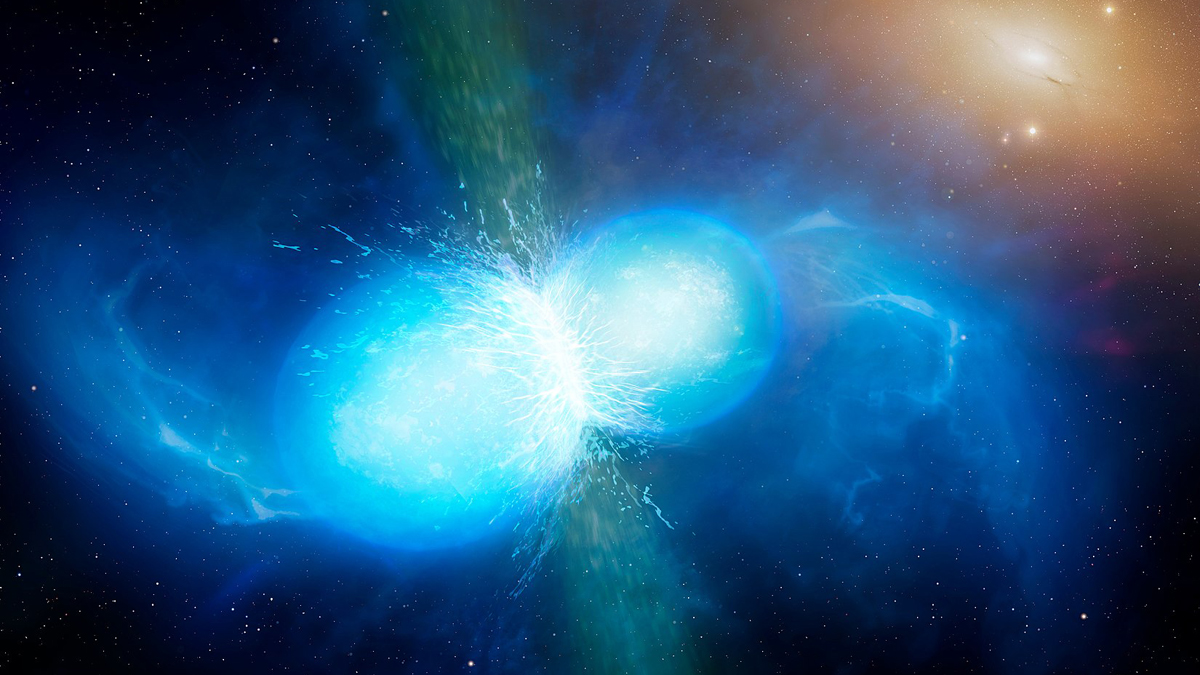Violent origins of gravitational waves probed by new telescope array
The BlackGEM array will search in visible light for mergers of black holes and neutron stars.

A new telescope array has begun to hunt for the most violent and cataclysmic events in the cosmos, clashes so powerful that they cause the very fabric of space and time to "ring."
The BlackGEM array, consisting of three new telescopes located at the European Southern Observatory's (ESO) La Silla Observatory in Chile, will search in visible light for events like neutron star collisions and black hole mergers, which launch ripples in space-time called gravitational waves.
"With BlackGEM, we aim to scale up the study of cosmic events with both gravitational waves and visible light," BlackGEM Principal Investigator Paul Groot, of Radboud University in the Netherlands, said in a statement. "The combination of the two tells us much more about these events than just one or the other."
Related: Hunting gravitational waves: The LIGO laser interferometer project in photos
Thus far, only one explosive event has been detected in both gravitational waves and visible light, the collision between two neutron stars with masses between eight and 20 times that of the sun, which occurred 130 million years ago.
By detecting both the gravitational waves and visible light generated by such events, scientists can not only hone in on their precise locations but can also learn more about their nature. For example, astronomers could confirm that collisions between neutron stars, also known as kilonovas, do indeed forge heavy elements like silver, platinum, and gold, as suspected.
Following up ripples in space-time predicted by Einstein
Gravitational waves were first predicted by Albert Einstein in his theory of general relativity. This 1915 theory says that objects of mass "warp" the fabric of space-time, a four-dimensional unification of space and time, like objects placed on a stretched rubber sheet. This warping gives rise to gravity. General relativity also suggests that when massive objects accelerate, they generate gravitational waves.
Breaking space news, the latest updates on rocket launches, skywatching events and more!
Objects of tremendous mass circling each other, like binaries of black holes and neutron stars, produce gravitational waves that carry angular momentum away from the system, causing them to spiral together faster and faster. When the two objects finally collide and merge, they create a burst of gravitational waves that can be detected from Earth, even after traversing millions or billions of light-years at the speed of light to reach us.
The first detection of gravitational waves was made on Earth in 2015 by the Laser Interferometer Gravitational-Wave Observatory (LIGO) and came from the collision of two black holes 1.3 billion years ago. Since then, LIGO, based in the U.S., and its fellow gravitational wave detectors Virgo in Italy and KAGRA in Japan have detected gravitational waves from other black hole mergers, neutron star mergers and even collisions between black holes and neutron stars (which are the super-dense corpses of massive stars).
As impressive as this is, however, gravitational wave detectors can't accurately pinpoint the location from which gravitational waves originate. Nor can they see the energetic blasts of light that are emitted with the gravitational wave bursts that occur during these collisions.
That's where BlackGEM will come in, quickly scanning large areas of the sky to hunt for gravitational-wave sources in visible light and more accurately honing in on their locations.
How BlackGEM will fit in
Once BlackGEM identifies the source of gravitational waves, larger instruments like the Very Large Telescope (VLT) located on Cerro Paranal in the Atacama Desert of northern Chile will follow up on its findings by zooming in on the event.
The three telescopes of the BlackGEM array are each 25.6 inches (65 centimeters) in diameter and can investigate different areas of the sky simultaneously. Eventually, these telescopes, built by Radboud University, the Netherlands Research School for Astronomy and KU Leuven in Belgium, may be joined in the array by a further 15 scopes.
This should give an impressive boost to the sky-searching power of the BlackGEM array, the first system of its kind in the Southern Hemisphere.
"Despite the modest 65-centimeter primary mirror, we go as deep as some projects with much bigger mirrors because we take full advantage of the excellent observing conditions at La Silla," Groot said.
BlackGEM won't just be hunting for the sources of gravitational waves, however. The telescope array will also survey the southern sky in fully automated mode, allowing it to quickly find and identify events and objects with rapidly changing brightness, also known as "transients."
These could include supernovas, titanic explosions that accompany the deaths of massive stars and then quickly fade from view.
"Thanks to BlackGEM, La Silla now has the potential to become a major contributor to transient research," La Silla Observatory site manager Ivo Saviane said. "We expect to see many outstanding results contributed by this project, which will expand the reach of the site for both the scientific community and the public at large."

Robert Lea is a science journalist in the U.K. whose articles have been published in Physics World, New Scientist, Astronomy Magazine, All About Space, Newsweek and ZME Science. He also writes about science communication for Elsevier and the European Journal of Physics. Rob holds a bachelor of science degree in physics and astronomy from the U.K.’s Open University. Follow him on Twitter @sciencef1rst.

